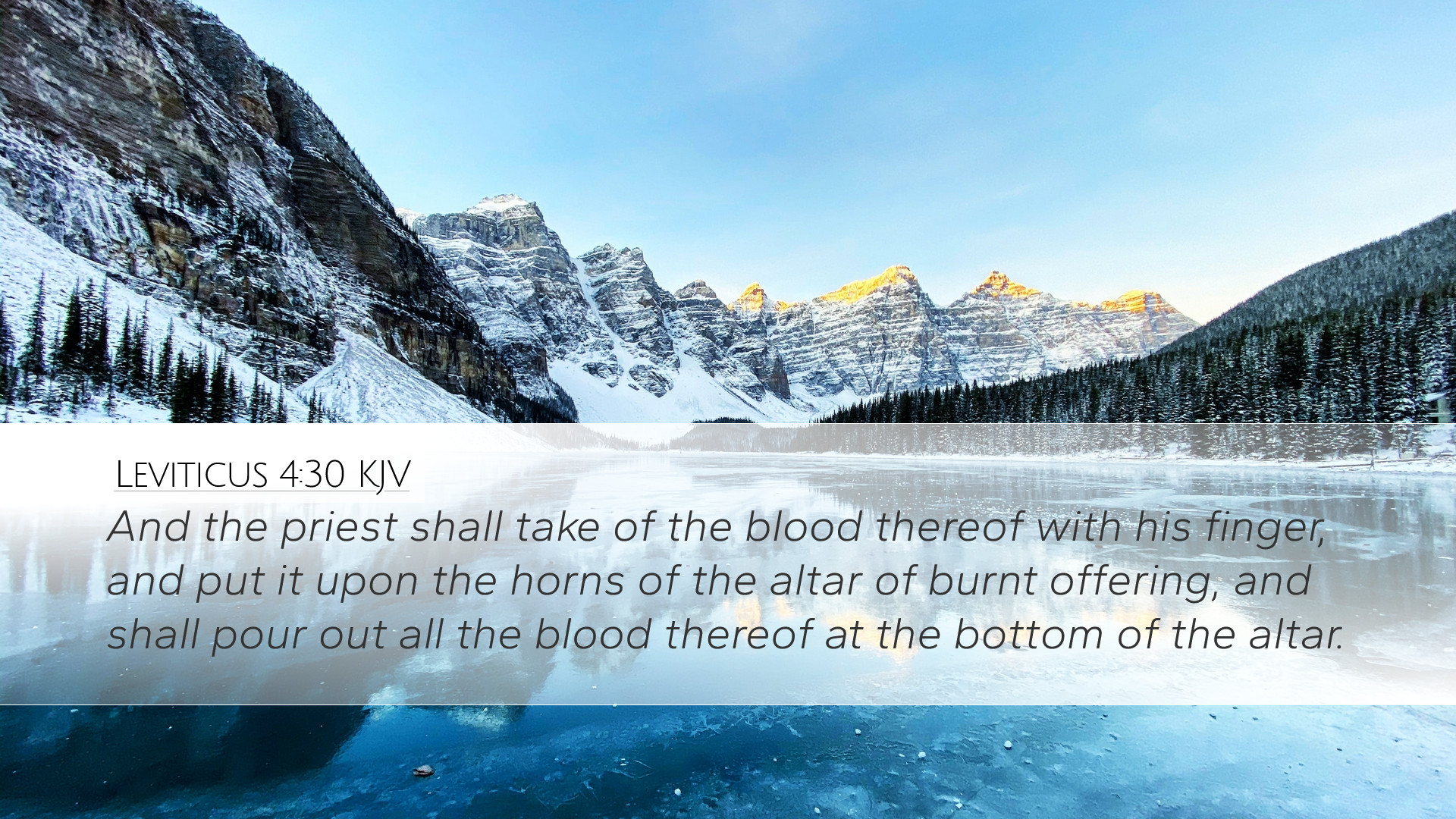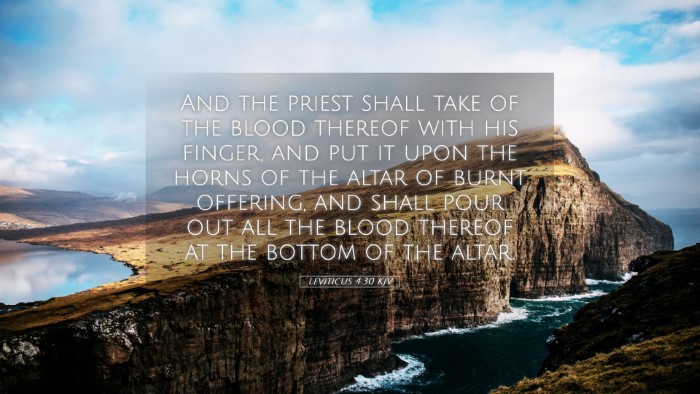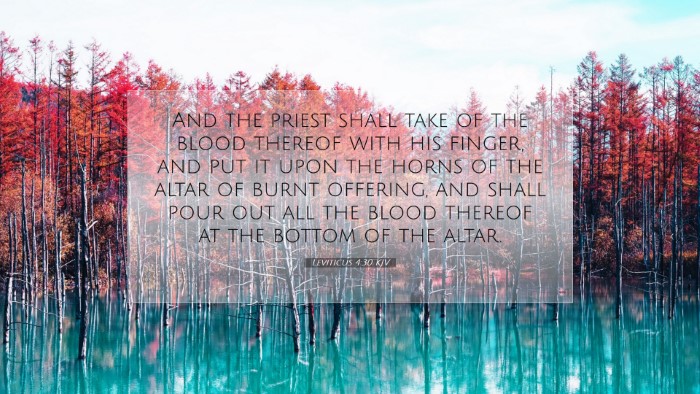Commentary on Leviticus 4:30
Verse: "And the priest shall take of the blood thereof with his finger, and put it upon the horns of the altar of burnt offering, and shall pour out all the blood at the bottom of the altar." (Leviticus 4:30)
Introduction
The book of Leviticus presents the detailed instructions concerning the sacrificial system of Israel. In Leviticus 4, God outlines the provisions for sin offerings, which are central to the atonement of sins. Leviticus 4:30 focuses on the specific ritual involving the blood of the sin offering, emphasizing the role of the priest and the significance of blood in the sacrificial system.
Historical Context
Understanding the ancient Israelite context is essential for interpreting Leviticus 4:30. The Israelites were a people chosen by God, and their worship was heavily centered around ritual purity and atonement. Sin offerings were prescribed for unintentional sins committed by individuals or the community, highlighting the seriousness of sin and the need for restoration in the eyes of God.
The Role of the Priest
Matthew Henry notes that the priest serves as a mediator between God and the people. In his commentary, he emphasizes the importance of the priesthood in conducting the sacrificial rites and facilitating the processes of atonement. Each action performed by the priest, especially concerning the blood, symbolizes the seriousness of sin and the necessity for an intercessor to approach God on behalf of the sinner.
Significance of Blood
Blood in the ancient Israelite sacrificial system represents life and is central to the process of atonement. Albert Barnes points out that the act of applying blood to the horns of the altar signifies the sanctification and dedication of the offering. The application of blood signifies the transfer of sin from the individual to the sacrifice, indicating that through the life of the animal, atonement is achieved. Barnes highlights that this practice illustrates the weight of sin and the necessity of blood for purification.
The Altar of Burnt Offering
The altar of burnt offering symbolizes the place of sacrifice and consecration. Adam Clarke elaborates on this by stating that the horns of the altar represent safety and refuge. In ancient Israel, the altar was also seen as a place where divine meeting occurred; thus, the usage of blood here is profoundly significant. By pouring the blood at the base of the altar, the ritual emphasizes both the seriousness of sin and the provision made by God for atonement.
Theological Implications
The act of offering sacrifices and the use of blood in atonement in Leviticus sets the foundation for New Testament understandings of Christ's sacrifice. Matthew Henry implies that these rituals foreshadow the ultimate sacrifice of Christ, who serves as the Lamb of God. The permanence of His sacrifice surpasses the temporary offerings of animals, bringing full and final atonement for sin.
Understanding Atonement
Atonement is a critical theme in this passage, and the rituals described serve to illustrate how sin disrupts fellowship with God while simultaneously revealing God's plan for reconciliation. Albert Barnes emphasizes that the importance of these rituals is not in the actions themselves but in understanding that they point to a greater reality: the need for redemption.
Conclusion
Leviticus 4:30 is a pivotal verse in the sacrificial system of the Old Testament, filled with rich theological implications. The commentary by noted scholars such as Matthew Henry, Albert Barnes, and Adam Clarke offers profound insights into the significance of the priest, the role of blood in atonement, and the overarching themes of sin and reconciliation. For pastors, students, and theologians, understanding this verse helps to grasp the foundation of God’s redemptive plan, culminating in the New Covenant through Christ.
Application
As modern readers and practitioners of faith, it is essential to reflect on the seriousness of sin and the profound grace of God’s provision for atonement. Just as the ancient Israelites turned to the altar for forgiveness, so too should believers today approach the cross of Christ, recognizing that through His blood, we have access to the Father and the fullness of eternal life.


